Terminology
Before we dive any further into this article, it’s important to familiarize ourselves with the lathe terminology that we’ll be using throughout it.
If you’re familiar with lathes and all the components that go along with them, feel free to skip on over to the next section!
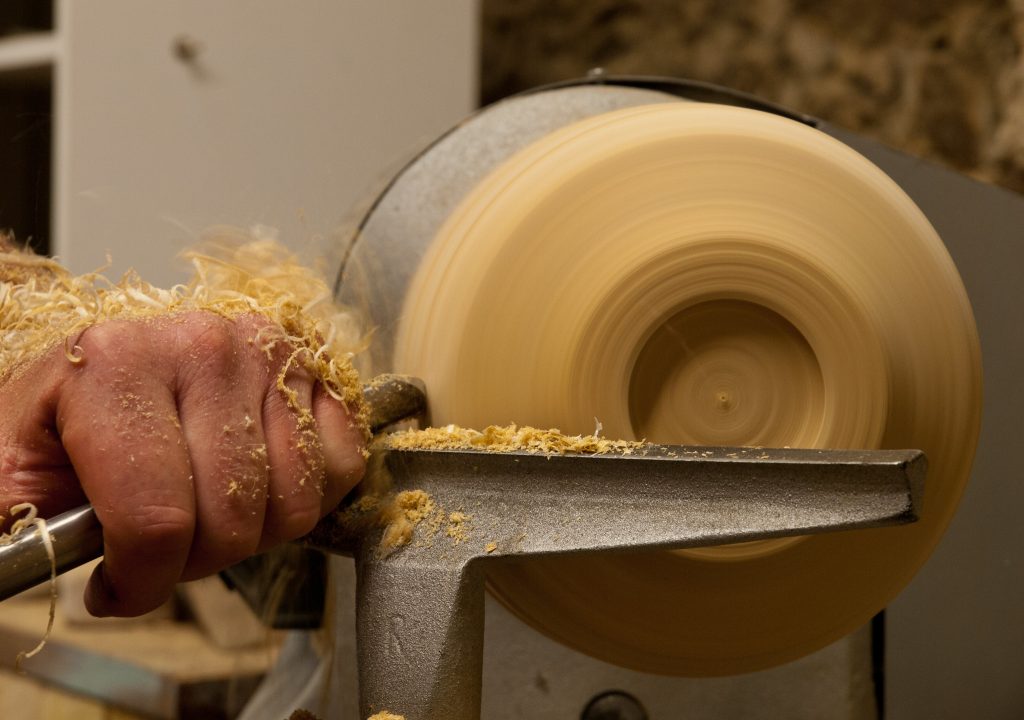
Workpiece
A workpiece is an object that you intend to work on with the lathe machine, often a cut of wood or metal.
Lathe Bed
A long platform on which the other parts of the lathe are mounted, stretching from the headstock to the tailstock of the lathe. More commonly referred to as just the “bed.”
Bedways
Also referred to as “ways,” bedways are straight paths built into the bed of the lathe along which the carriage and tailstock can move.
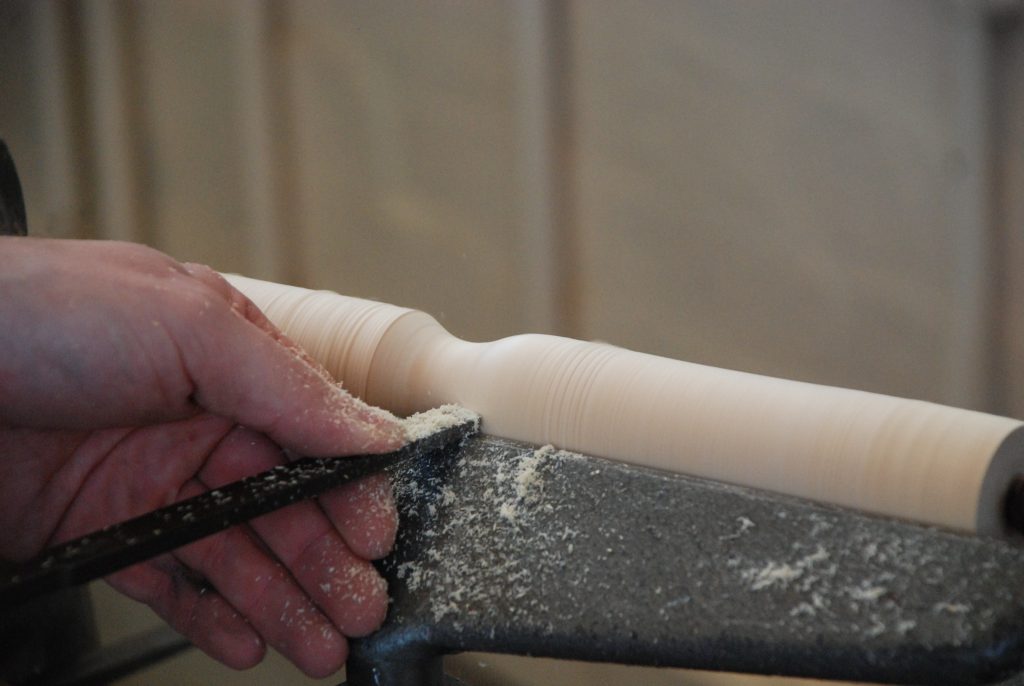
Spindle
The lathe spindle is the main part of the lathe machine which holds and rotates the chuck, which in turn holds and rotates the workpiece.
Carriage
A unit upon which is fixed the tool post; the carriage can be moved back and forth on the lathe along the bedways.
Compound
Also referred to as the “compound slide” and “compound rest,” the compound is an adjustable platform that the tool post is fixed to, allowing it to be angled in different directions.
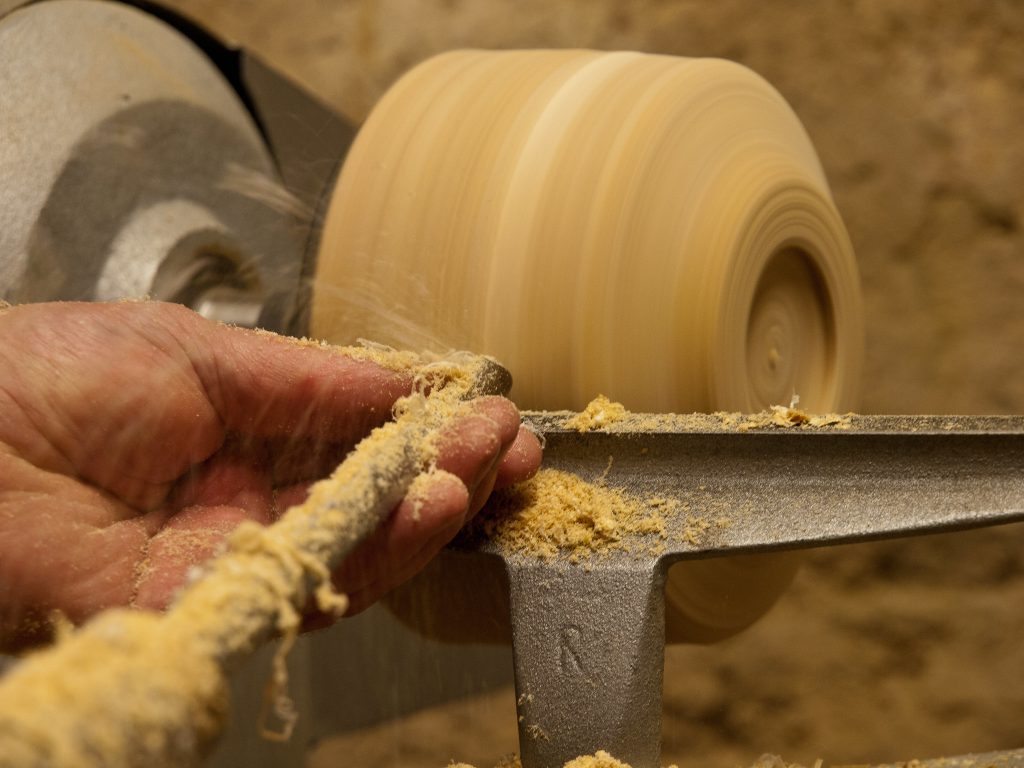
Cross Slide
A part of the carriage that facilitates the movement of the tool post along the bedways of a lathe machine.
Tool Post
A tool holder can be found sitting atop the carriage of a lathe. A tool post is used to firmly hold a tool at the desired position.
While there are countless more parts and structures that make up a lathe, from the hand wheel to the face plate, and even smaller component parts like cutting tools and drill presses, these definitions will give you a general idea of what we’ll be referring to in this article.
Now for what you came here for:
What Is A Lathe Swing
When operating heavy machinery, it’s important to understand every aspect of how it functions, even when it comes to other machines. As it happens, the swing of a lathe is one of the most crucial aspects of running the device.
Without a proper understanding of what swing represents, you’re not going to get very much done on your lathe.
Fortunately, the concept is simple enough. The swing of a lathe represents the maximum size of a workpiece that the lathe can work on.
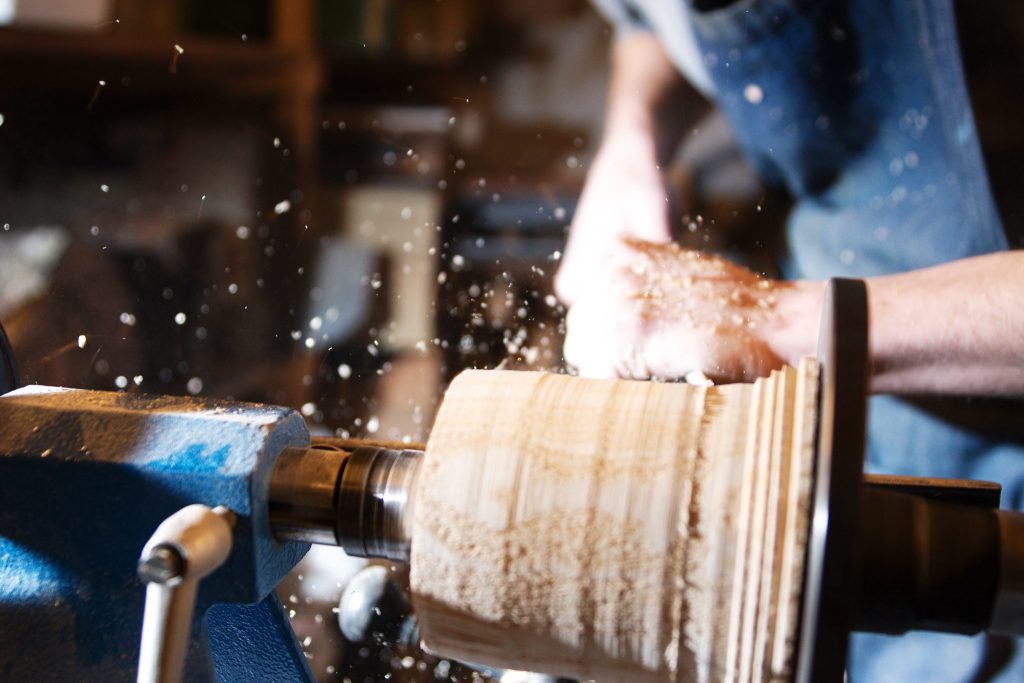
If you’ve read this far into an article about lathe swing, you probably already know how a lathe works. However, on the off chance you don’t; a lathe rotates an affixed workpiece in order to perform various actions. This means turning wood or metal to sand, drill, cut, face, and even polish it.
The high-speed rotation of the chuck and spindle during the work process removes material for the creation of perfectly symmetrical products, made out of wood or metal. Though you might have to use separate lathes for your wood and metalworking.
Swing is not something confined to either wood or metal lathes, though. So you’ll have to deal with it regardless of your material preferences.
Historically, the swing of a lathe represents the diameter of the object, measured from the center of the spindle to either end of the workpiece. Though you might find some lathes on the market whose swing refers to a radius, especially in Europe.
This is easy enough to verify with a store employee or a quick Google search. We encourage you to do so before purchasing your lathe, particularly if you have a specific workpiece in mind.
Now that you have a general idea of what a lathe swing is, let’s go into the different types of swings.
Types Of Lathe Swing
If our equipment could magically position itself exactly how we want it, we would get a lot more work done. Unfortunately, it’s up to you to understand and account for the mechanics of your machine tool.
As such, it’s incredibly important to read the labels on your machine tools. Consequently, that means understanding what those lathe labels say.
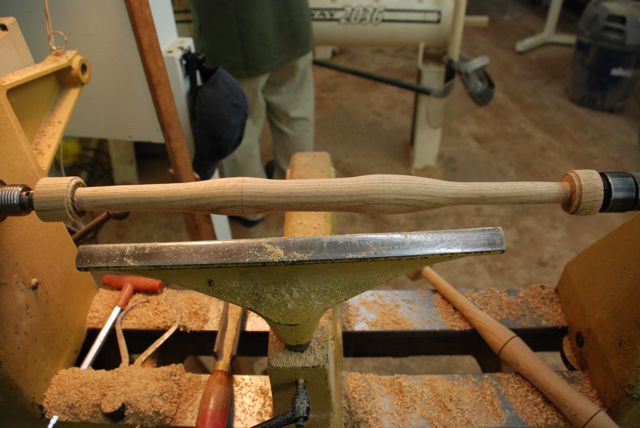
While we’ve established that the swing on a lathe refers to the maximum diameter of a workpiece that can be used, there are different types of swing that manufacturers, machine shop employees, and even YouTube tutorials might be referring to.
Let’s get into some of the ways to measure lathe swing.
Swing Over Bed
Perhaps the most commonly used swing measurement is “swing over bed.”
This simply refers to the maximum diameter of a workpiece that can be safely rotated over the bed of a lathe without making contact or damaging it in any way.
If you’re measuring it yourself, hold your ruler at the center of the spindle and measure the distance between it and the bed of the lathe. To find the diameter, double the measurement and you have your swing over the bed.
Swing Over Carriage
You might also come across the term “swing over the carriage.”
Similar to the previous concept, swing-over carriage indicates the maximum diameter of a workpiece that can be safely rotated over the carriage of your lathe.
Measure from the spindle to the top of the carriage and double the result to find the swing-over carriage of a lathe.
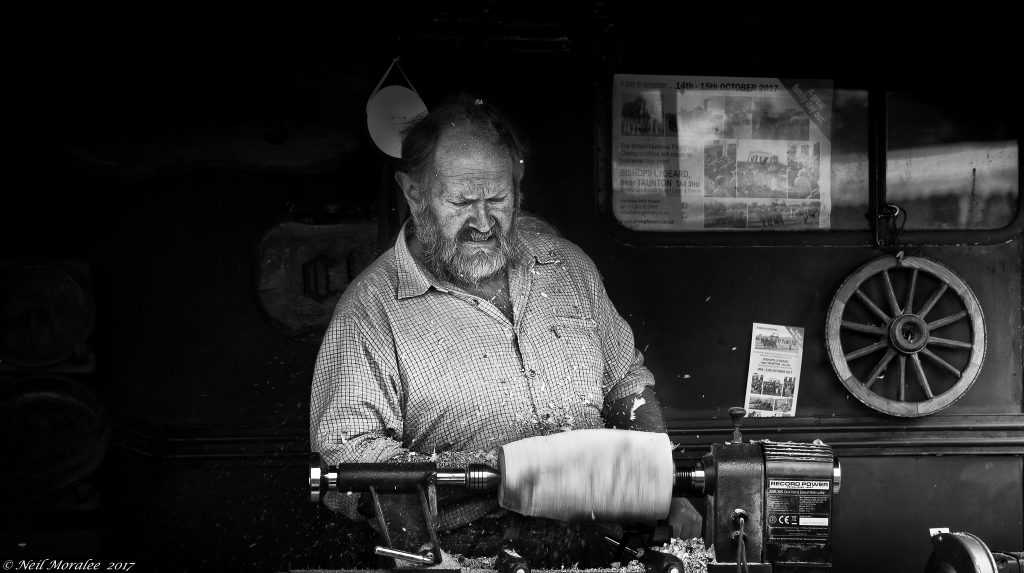
Swing Over Compound
“Swing over compound” is another measurement you might find on the label of a lathe.
If you’ve caught on by now, you know that this refers to the maximum diameter of a workpiece that can be safely rotated over the compound of a lathe machine without damaging it.
The measuring process is much the same, going from the center of the spindle to the compound, and doubling the value to find the diameter.
Other Swing Types
Depending on the brand, manufacturer, and country of origin of your lathe, you may find a variety of swing measurements listed on the label of a lathe. From the most common three listed above to a selection of others from “swing over gap” to “swing over the cross slide.”
The easiest way to decode what the term means is to find the component referenced (i.e. the gap or the cross slides) and measure the distance between them and the center of the lathe spindle.
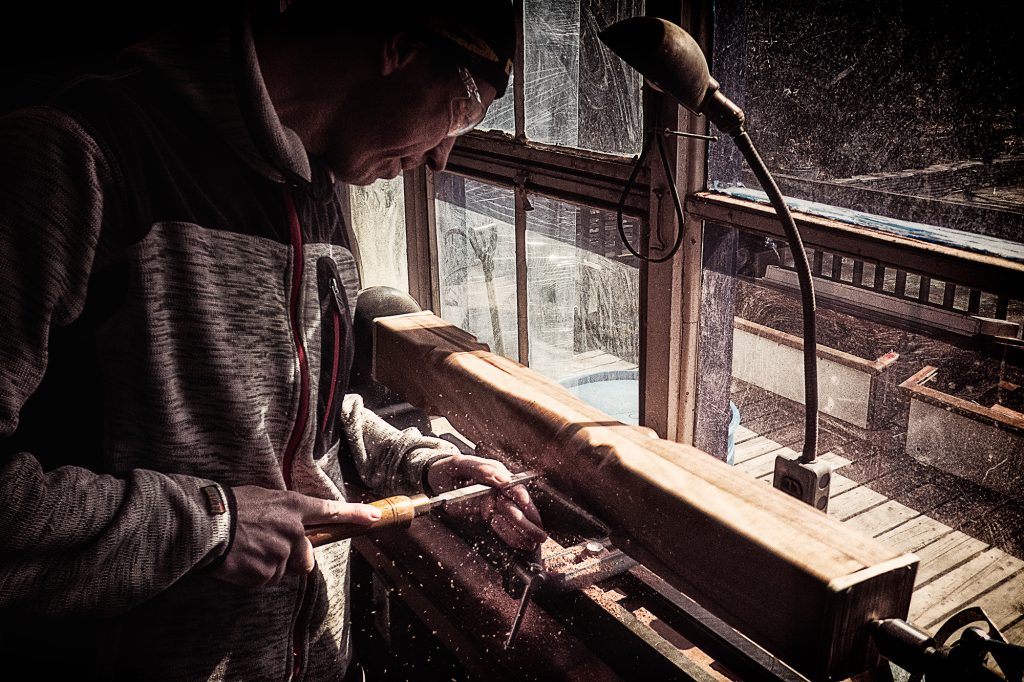
But now that you know what a lathe swing is, what it may be called, and how to measure it, what can you do with this information?
What Does The Swing Of A Lathe Tell Us
If you come across a lathe with a swing-over bed measurement of 10 inches, it’s important to know that you cannot just shove on a 10-inch workpiece and call it a day.
The swing of a lathe is the maximum measurement of a workpiece, not the recommended diameter. For instance, you could technically eat four large pizzas by yourself, but you would be left uncomfortably full after.
Similarly, using larger workpieces or the maximum diameter workpiece can lead to your machine tools being uncomfortably full. This can make it quite difficult to maneuver your object to your liking, and nearly impossible to achieve your desired shape.
For your own sake, it’s best to stick to an inch or two below the maximum length when working with larger workpieces.
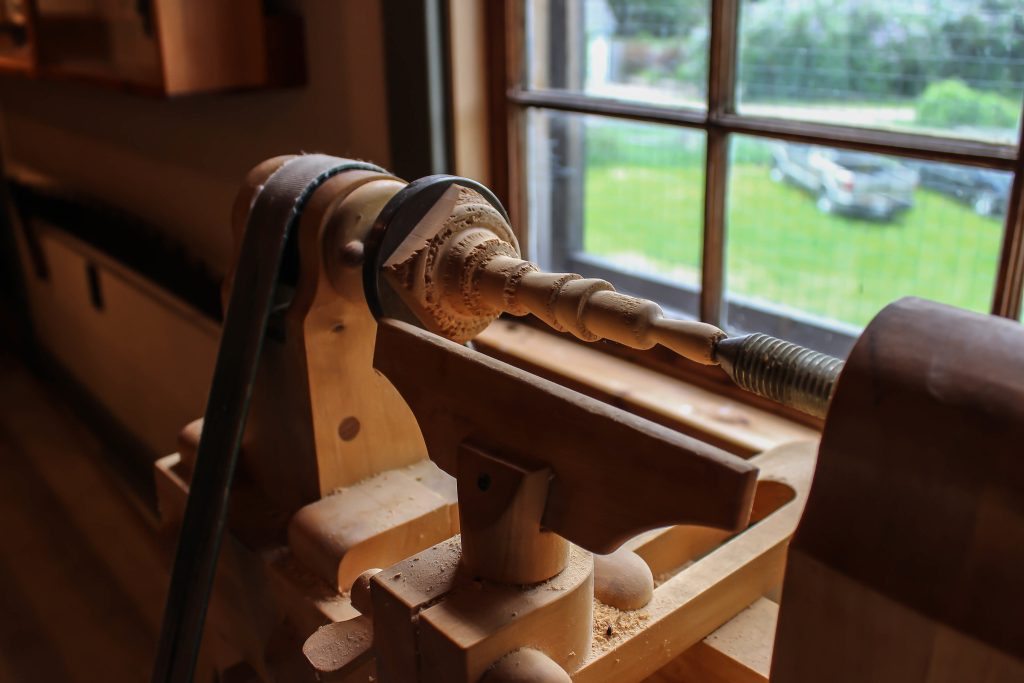
How To Measure The Swing Of A Lathe
This was already briefly covered in the section on swing types, but let’s go a little more into detail about how to measure the swing of your lathe.
If you’ve lost the label, or just want to double-check, the process is a fortunately easy one. All you’ll need is some measuring tape or a ruler, and of course, your lathe.
Firstly, locate the center of the spindle. This is the bit of the lathe that spins when you attach a piece of wood to it. From the center of the spindle, measure the distance to the bed of the lathe.
This first measurement is the maximum radius. Some swings are measured in radius, and this value will give you enough of an idea of the size of the workpiece you’ll be able to use. However, seeing as most lathe swings are measured in diameter, and it’s generally easier to measure a whole object instead of half of it, let’s find the diameter too.
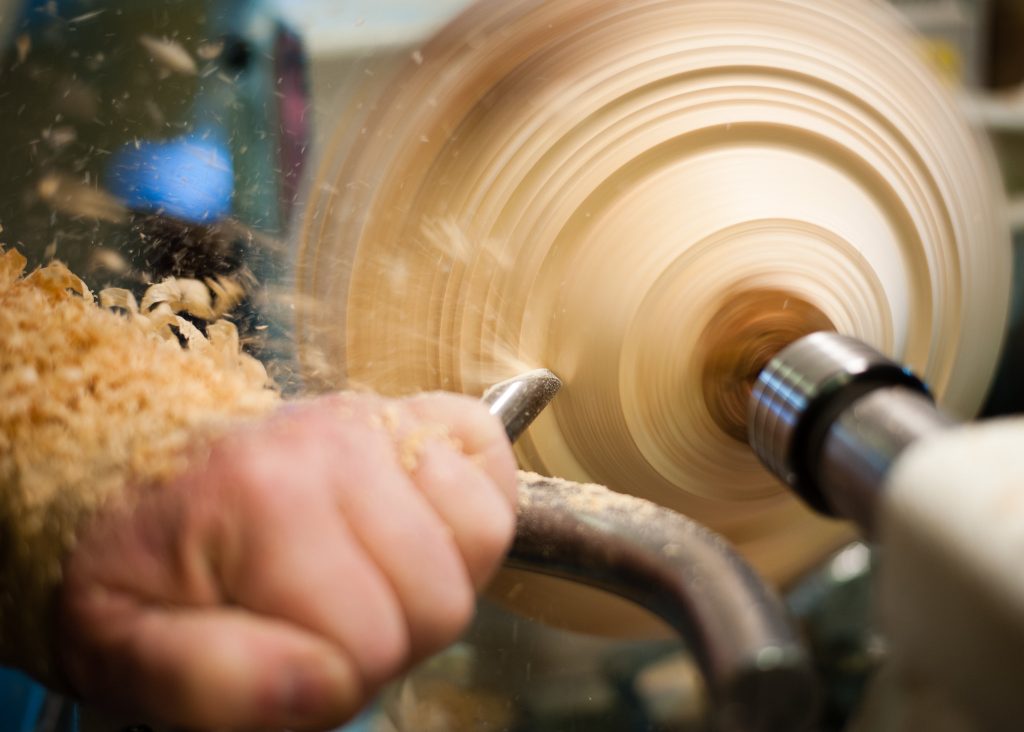
Just like in middle school geometry, the diameter of a circle is two times its radius. So double your initial measurement and viola! You now have the swing of your lathe.
For instance, if the distance between the spindle and the bed was 7 inches, doubling that would give you 14 inches. This means that your lathe had a swing of 14 inches.
Keep in mind that you shouldn’t be fitting workpieces of the maximum swing length into your lathe, and you’re ready for lathe operation!
Additional Notes
Finally, here are just a few additional notes before you go on to create amazing things with your lathe.
Different companies can have different measurement criteria for their machine tools. From manufacturers to packaging companies, the listed lathe swing may follow a host of different standards. It’s important to understand what each of the terms means before making a purchase.
Metric systems may vary. Between different countries and brands, some lathes may measure swing in inches, while other lathes prefer centimeters. Trust that you don’t want to get caught with a 7-centimeter swing and a 7-inch workpiece.
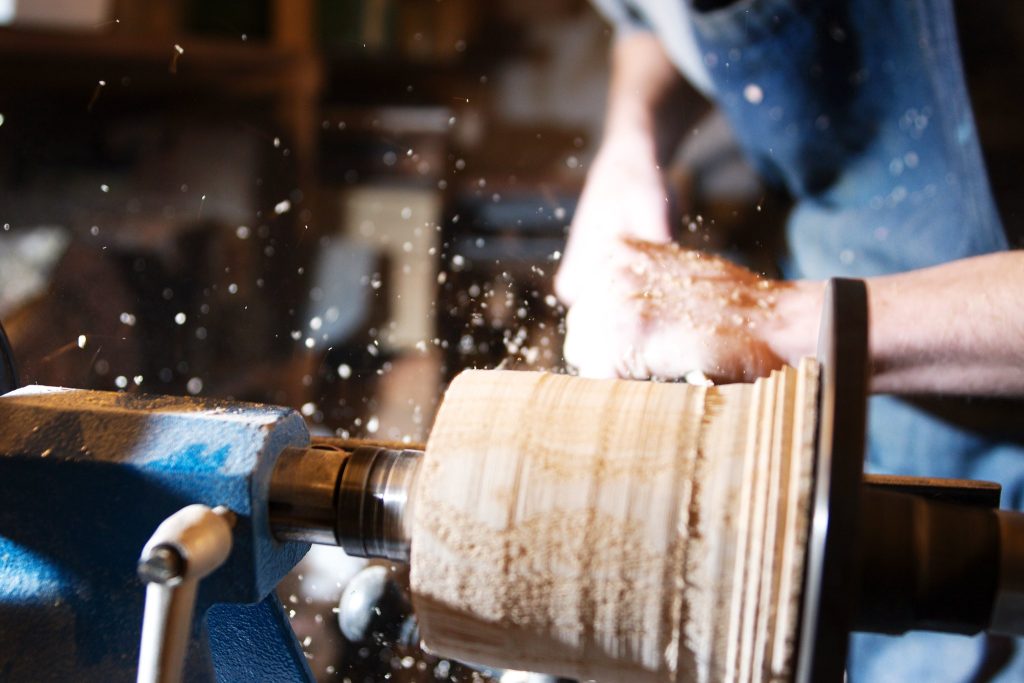
In general, be attentive to the details provided on your lathe labels, and when in doubt, ask an employee at the machine shop or the internet.
Conclusion
We hope that this article has told you everything that you need to know about lathe swings, and cleared up any confusion surrounding the terminology-logged world of lathe working.
Good luck with your creations!
